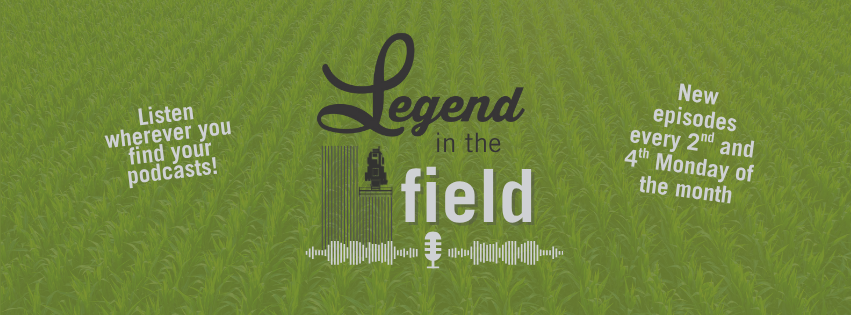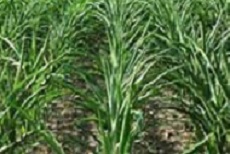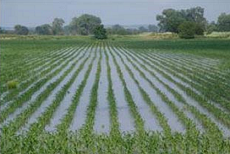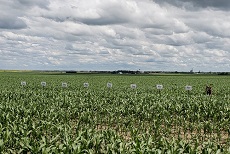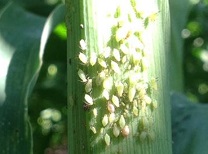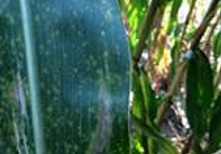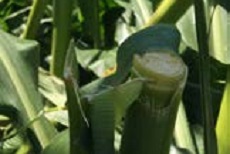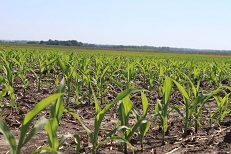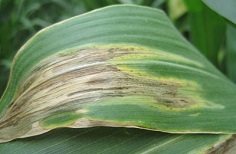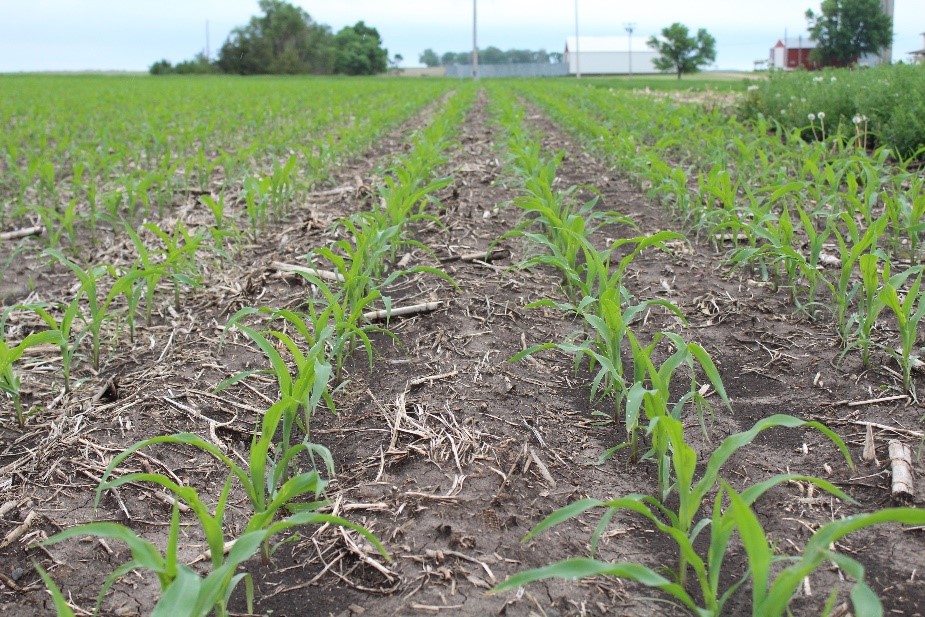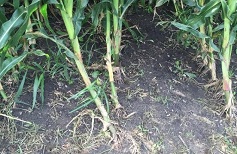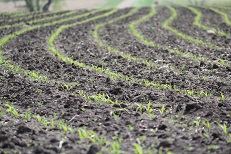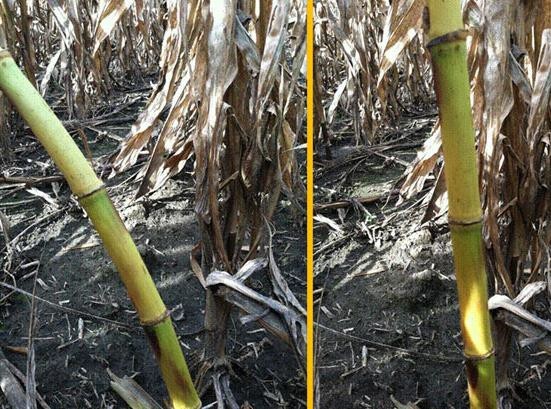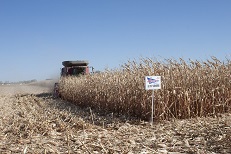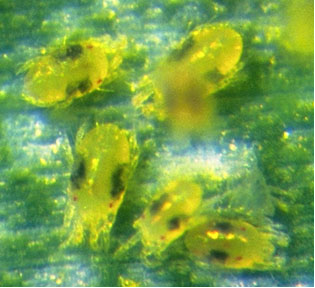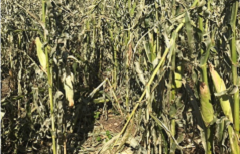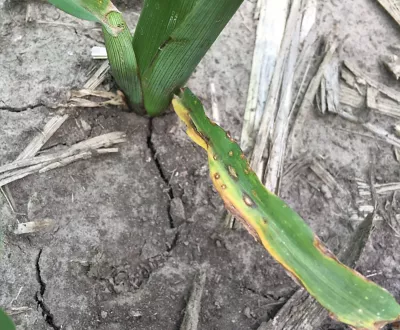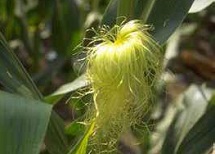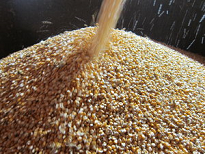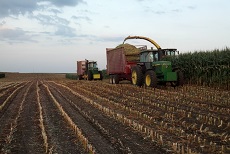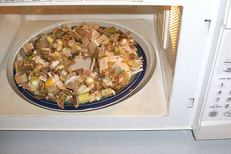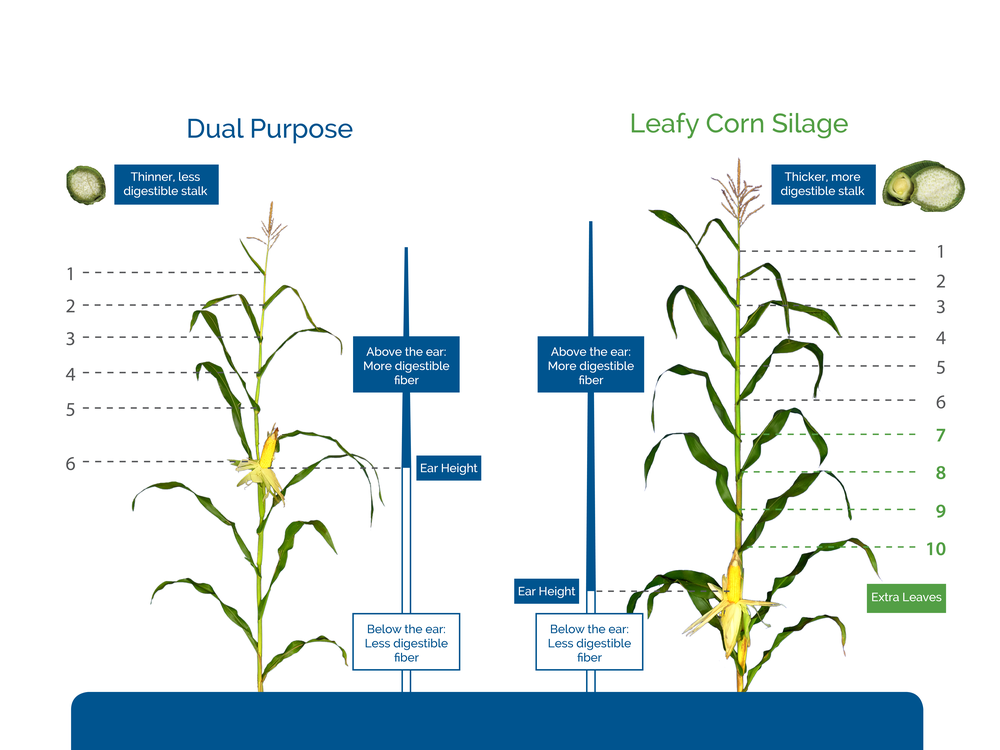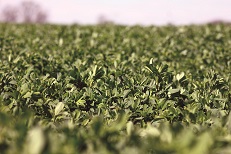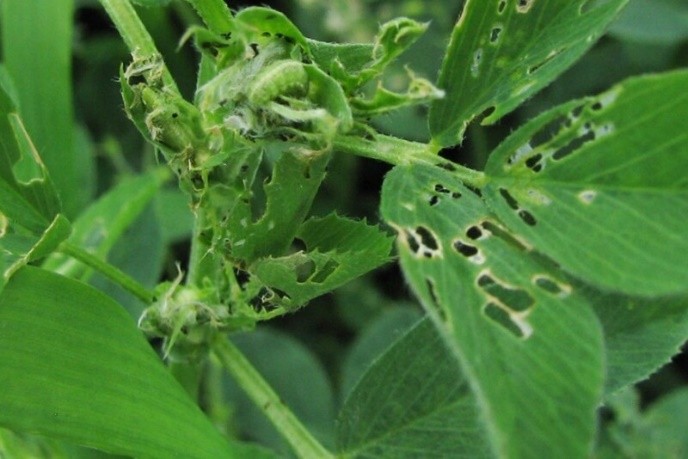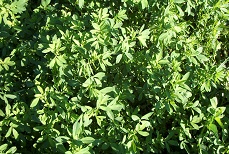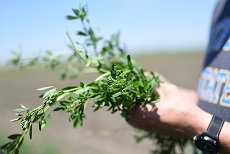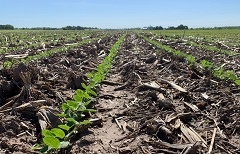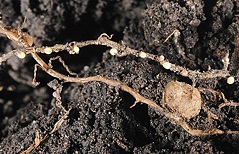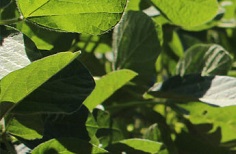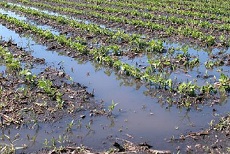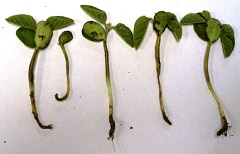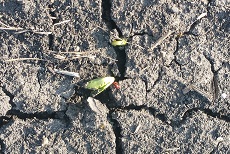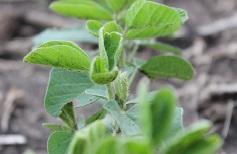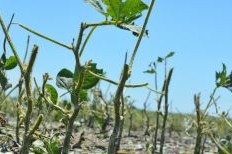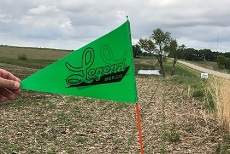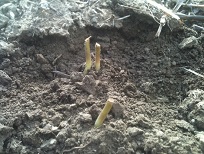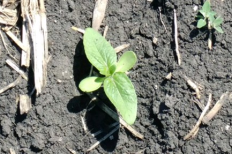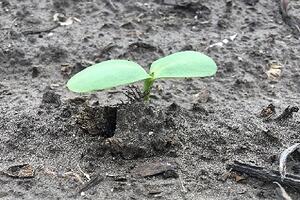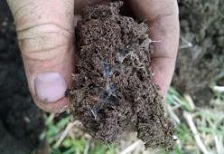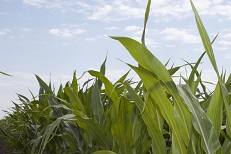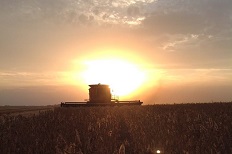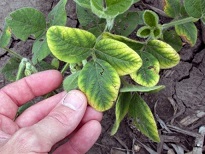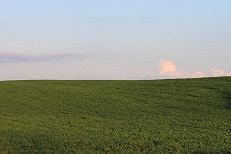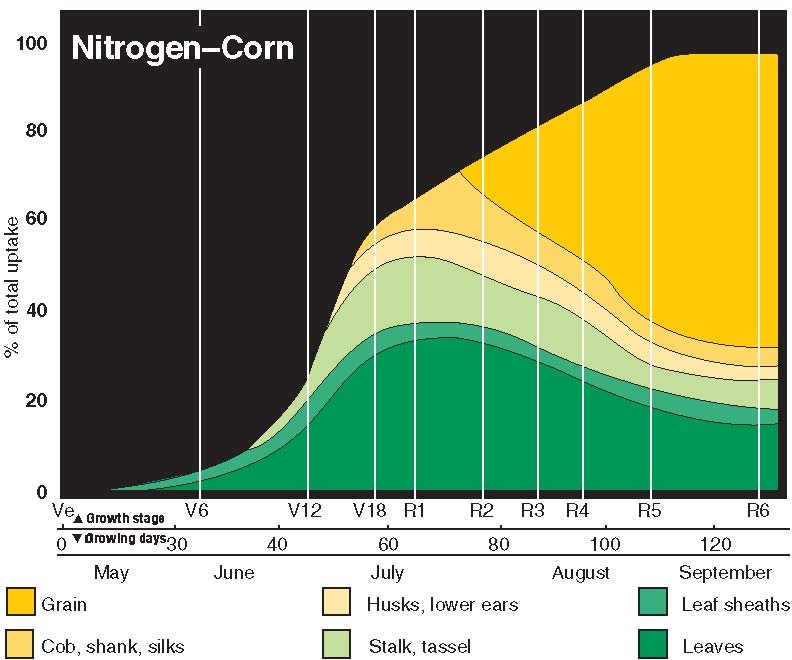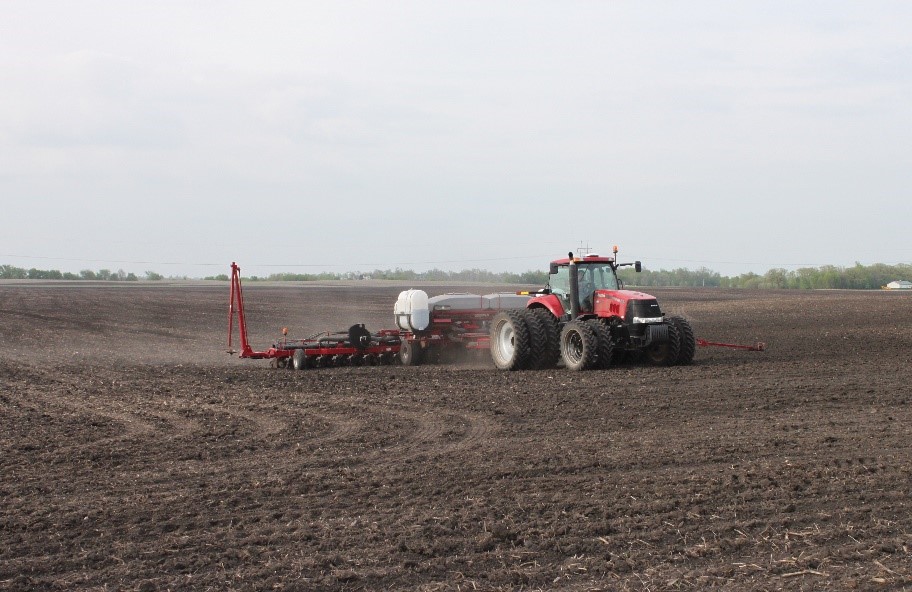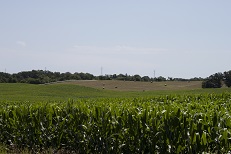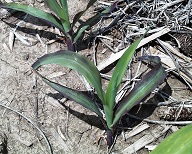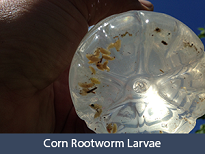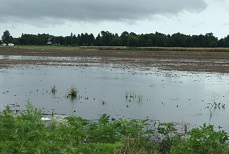
AGRONOMY LIBRARY
Our agronomists draw from vast experience in local growing conditions to give you confidence to meet whatever challenges come each year. Below are links to some of our most recent agronomic information.
Jump to Topic:
Ask an Agronomist
Can't find the answer you're looking for? Fill out the form below and we'll have one of our agronomists contact you with an answer.
Corn
Impact of Early Season Drought on Corn
Corn is very susceptible to drought damage because the plant needs water for cell elongation and growth. Because corn cannot delay vegetative growth, there is a danger of yield loss from early drought conditions.
In some areas, rain has been a welcome situation, but in other areas, heavy rains have caused ponding or flooding in fields. All this rain has caused concerns regarding the possible effects it could have on the corn crop.
Everyone knows that a weedy corn field decreases the yield potential of that field, but what’s important to understand is how early this yield loss can occur. Yield is determined very early in corn, usually around the V5 growth stage.
Corn Leaf Aphids are not as detrimental to yield in corn fields as aphids are in soybean fields. The biggest loss to yield is when corn leaf aphids start feeding on the top portion of leaves and the tassel before pollination starts.
Physoderma and Corn in the Northern States
Over the years, Physoderma has from time to time wreaked havoc on crops across the US, causing severe cases of stock rot and ear drop. The following is a brief introduction to the disease.
When the weather makes a turn for the worst and storms roll through during the summer months, many farmers cringe as they hear the strong winds. They are worried about the crops and hope their fields are not impacted by the high wind events.
In-Season Nitrogen Management Tips for Corn
As we look at the seven most important factors that contribute to corn yield the second on the list can be a very difficult target to hit: nitrogen.
Each year across the corn growing region, producers are faced with plant diseases, either early season seedling diseases, mid-season foliar diseases, or late season stalk diseases.
What weeds, if any, on your farm have become hard to control over the past few years? I would venture to guess your answers would be all across the board with variances by region, but with some similarities.
Every year, we see corn root worm issues moving further and further north. Some farmers have been dealing with this for years, while others are just experiencing it for the first time.
Tips for Selecting Corn Hybrids
Hybrid selection is one of the most critical decisions a grower can make for the success of their operation. A number of factors go into this decision that are related to environment, farming practices, weather, geography, and markets.
Late Corn Planting Recommendations
Full-season corn products, for a given area, typically have the highest yield potential, which may help offset an increase in drying costs. As planting is delayed, corn product maturities come closer together.
As we near harvest, it’s important to start determining your order of harvest for fields. This is determined by two key factors: plant health and moisture percentages.
Corn: Let it Dry in the Field or Pay for Drying in the Bin?
Every October, farmers face a common question, especially when corn prices are lower than expected: Should I let my corn dry in the field, or should I invest in drying it in the bin?
Two-spotted spider mites are a common pest that can cause significant damage to corn and soybean crops. These tiny arachnids feed on the juices of leaf cells, which can lead to discoloration, stunted growth, and reduced yields.
Stalk lodging presents itself worse in some years than others and this is one of those years. Lodging may occur near the crown, above or below the ear, and sometimes higher in the stalk.
Monitoring and Controlling Black Cutworm
There are several different species of cutworm that affect agricultural production in our Legend footprint, but the one that can cause the most damage is the black cutworm.
Anthracnose is a fungal disease that can significantly impact corn fields by affecting standability, plant health, and overall yield. This pathogen targets both the leaves and stalks of corn, causing a range of symptoms above and below the ear.
Relative Maturity Vs. Growing Degree Days
The relationship between the number of growing degree days (GDD) or heat units required to bring corn hybrids to physiological maturity (black layer) and relative maturity (RM) has been challenging and at times confusing.
Silage
Breeding has a profound effect on the architecture and behavior of a corn hybrid. As a result of very different breeding goals, ideal grain and ideal silage hybrids have mostly OPPOSING characteristics.
Silage harvest will soon be upon us and the decisions made at chopping will affect silage quality. Determining when to harvest silage (at the right whole-plant moisture) can be difficult.
How do you know when your silage is ready to chop? Determining silage moisture can be a challenge. Dry matter content of the whole plant can vary with maturity.
10 Ways to Boost Your Bottom Line
Leafy, Floury Leafy and Full Floury Leafy Corn Silage Hybrids deliver increased income over feed costs in sophisticated ways. The key is in the synergy between their silage-specific characteristics.
Alfalfa
While most Midwestern alfalfa is planted in the springtime, summer seeding has its benefits as well. For those who like to plant oats with their alfalfa for oatlage or for grain, consider planting a pure stand of oats followed by a summer seeded pure stand of alfalfa.
Alfalfa weevils typically hatch in early spring from the eggs that they overwinter in and then move into a larva stage. They transform into the larva stage after approximately 200 – 250 Growing Degree Units (GDU), typically around mid-May, depending on geography
Each summer a small insect, known as potato leafhopper (PLH), infests alfalfa acres in some parts of the Midwest. Sometimes damage is severe and can easily be seen, other times it is minor and hardly noticeable.
Establishing alfalfa is crucial and requires more effort compared to other crops. Since an alfalfa plant will last four years or more, a poor producing stand can be haunting.
Often, it is easy for growers to become nearsighted and focused on the price of the seed and forget that alfalfa is a four-year investment. Is the added cost of a premium or elite alfalfa really worth the price?
Every year in some of our northern geography there are concerns about alfalfa winterkill. Sometimes, it is widespread and well anticipated, and other times it is a surprise.
Soybeans
Weed control in all crops is critical to achieving maximum yield. In soybeans specifically, there are multiple factors that can negatively affect their growth and development. The two main factors are moisture and nutrient uptake by the weeds.
Soybean Cyst Nematode is one of the most yield robbing pests soybean growers face today, especially in Minnesota and eastern North Dakota. Soybean Cyst Nematode, commonly reffered to as SCN, is a parasitic roundworm that infests the soybean root system.
Many soybean growers in the Upper Midwest face annual challenges to soybean production. Brown Stem Rot (BSR) is an economically important disease and is the result of the soil-borne fungus Phialophora gregata [2] that affects the inner stem of soybean plants.
It seems like Mother Nature has been very generous with rainfall in certain areas of the Midwest. With the significant amount of rain accumulating, we are seeing flooding and ponding in some soybean fields.
Everyone is eager to be out in the fields and planting this time of year. However, unseasonably cold temperatures and wet conditions have been the theme for much of our area.
Two-spotted spider mites are a common pest that can cause significant damage to corn and soybean crops. These tiny arachnids feed on the juices of leaf cells, which can lead to discoloration, stunted growth, and reduced yields.
Sudden Death Syndrome, more commonly known as SDS, is becoming more prevalent across many parts of the United States. SDS is a destructive soil-borne disease that can be difficult to manage.
Bean leaf beetles can overwinter in leaf litter and then emerge early season to start feeding on volunteer soybeans. They then will lay eggs on the volunteer plants, allowing for another flush of beetles.
Late Soybean Planting Recommendations
Soybeans flower and mature in response to photoperiod, also known as, day length. Shorter days after June 21st trigger flowering in soybean products.
Recent weather conditions in the region have brought significant hailstorms, raising concerns for soybean producers. While hail damage is always a concern, it's important to understand how it affects soybean crops differently than other crops like corn.
Sclerotinia stem rot, more commonly known as white mold, is a common and destructive disease. It is sometimes seen across the U.S. and Canada; however, it is more common in southeast Minnesota, northeast Iowa, and northwest Illinois.
For over a decade, spraying for soybean aphid control has become a standard practice for many growers. However, there’s still plenty of debate about the best way to manage these pests.
With so many different herbicide resistant trait platforms being used in soybeans today, it is critical that farmers know which field has each trait platform when it is time to make a herbicide application.
Sunflowers
When everything looks great from a distance, don’t forget to get out of the pickup and check your sunflower fields for cutworms this time of year. Sunflowers can have irreversible damage in the seedling stage from several species of cutworms.
Warm and dry weather has finally arrived and will hopefully continue. Some growers will just be getting started, but for others, their sunflowers have been sitting in the cold, wet ground for 14-21 days.
Post Emergent Herbicide Spraying for Sunflowers
There are limited choices for post emergent herbicides in sunflowers, and the window is small. Understanding how to stage sunflowers will help you not get caught off-guard and apply your post-emergent herbicide on time.
Management Tips
Open up any farm magazine and cover crops are bound to be found. It seems that “cover crops” and “going green” are the latest buzz words in the ag industry. Many producers are asking “what’s all the hype about?”
Growing Degree Units (GDU) is a measurement of the amount of heat needed for a corn plant to reach various stages such as tassel or maturity. Tracking GDUs is important for corn because they are not daylight determined (like soybeans)
Fall-applied nitrogen can be an excellent way to provide the nitrogen a crop needs. Any option for applying nitrogen in the fall will have the benefit of allowing planting to start immediately in the spring without having to wait for a fertilizer application ahead of the planter.
Diagnosing Nutrient Deficiencies in Field Crops
One of the most useful steps in diagnosing nutrient deficiencies, is knowing how that nutrient acts in the plant. Nutrients are classified as either mobile or immobile:
Fertilizer is one of the highest input costs in an operation. Soil sampling is vital to ensure the right nutrients are applied at the right rate, at the right time, and in the right place of the field.
Early Season Corn and Soybean Fungicide
As corn fields approach the V5 growth stage, many growers are exploring different products and methods to enhance corn and soybean yields. One option that often comes up in early-season discussions is fungicide application.
A common question farmers often ask is, “How much nitrogen do I need to grow a 220-bushel crop?” The answer, however, isn't as simple as one size fits all.
Spring Planter Maintenance Checklist
Spring planting is an important time for precision and there’s little room for error when it comes to getting your crop off to a good start. Here’s a maintenance checklist to consider as you begin preparing to plant:
Managing Feeding Crops with Severe Drought Stress
This article outlines effective methods for harvesting and feeding drought-stressed corn, soybeans, and sorghum-sudan, highlighting both the advantages and risks of each approach.
Prevent Plant
Weed Control After a Prevent Plant Season
Many areas within the corn belt experienced a wet growing season in 2019 and, in some cases, there were many acres that did not get planted. Managing these “idle” acres is as important as managing an actual crop.
Fallow Syndrome Following Prevent Plant
Many acres across the corn belt were too wet to plant in the spring of 2019. Because of this, the fields that were supposed to produce a row crop and possibly have a fertilizer application sat dormant and unproductive.
Pest Control After A Prevent Plant Season
After an extremely wet season, such as 2019, it can be tempting for a grower to consider reducing the cost of pest control the following season in order to reduce overall costs. This may or may not be a good idea.
Emergency Forage Options on Prevent Plant Acres
Cover crops can be a good way to take advantage of an otherwise unfortunate situation. Benefits accomplished with these cover crops will put farmers at an advantage for the following cash crop and for years to come.

